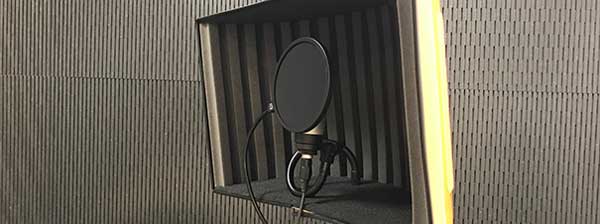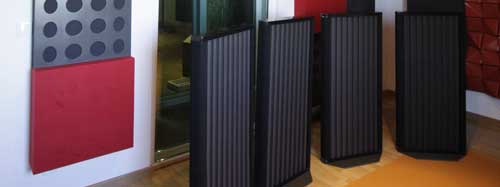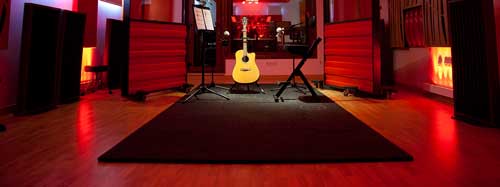Do you sing, play some instruments, want to record podcasts, maybe get into production and don't know the steps you must take to create your own home studio, we're here to help!

The best way is to take it from one end to the other, so let’s start with the voice. You will need a microphone with a stand so you won’t have to keep one hand occupied holding it forever. The type of microphone you choose depends on what sound you want to capture and, of course your budget. That will be a recurring theme. So let’s get a large diaphragm condenser mic for starters. It is ideal to capture voice and instruments keeping the clarity and precision needed for a good sound capturing.
JOCAVI VOCAL MIC REFLECTION FILTER is an acoustic bell for microphones that insulates from room effect. An easy and cheap solution that connects directly to the mic stand, shielding the capture without influencing the coloring or polarity of each microphone.

Now you want to get your voice inside the computer. Well, and you have to get a PC or Mac with a DAW or Digital Audio Workstation for music production, or at least a software that will let you record and edit sound. Next you'll need an audio interface, to convert our microphone's analog signal into a digital one. Our condenser microphone will also need some power, called phantom power, and for that the Audio interface will be good to. This interface can also be a mixer or if you want to spare some money and only need to record voices for podcasts, you can buy a USB microphone that will connect directly to the computer.
Now, we guess you want to hear what you’re recording. You will have to buy a set of headphones and nearfield monitors like these JBL Control One. The nearfield monitors, designed to be listened to in a close range can be placed on stands or over your desk. We have special anti vibration bases, the NEARFIELD BASE or SUBWOOFER BASE if you have a subwoofer to improve your low end frequency listening, that you can adjust in a vertical angle. These accessories are essential to reduce vibration from the speakers that resonate through the desk or floor.

But all that equipment can be near useless if you don’t have an acoustically treated room. If your room is bare and full of echoes you can get one of our ATP room packs or get some of JOCAVI’s acoustic panels.
The ATP Pack (01, 02, 03, 04, 05 and 06) is a standard pack of absorbers and diffusers made for rooms from 9m2 up to 40m2. Designed to provide acoustic comfort for home cinema, music rooms, recording, rehearsing or control rooms, it is a mix of products for those who want an off-the-shelf, pre-designed solution.

You can also contact JOCAVI and we can build a custom made solution for you. With over 1.100 product variations we have the perfect products for your needs.
Now you have a basic home studio set. A microphone that connects to an audio interface that goes into the computer's software to record and produce and a set of speakers so you can listen to the results. But of course there is more!
When you need to phisically and acoustically separate your home studio you can use our portable acoustic blind set, the BABS. Ideal to provide an outstanding acoustic division between each instrument or amplifier, optimizing the separation between microphones during sound capturing. It can be used to improvise a rehearsal, recording or control room. It comes in sets of two and it has two different acoustic sides that you can work to adapt the room to your intended purpose.

If you have a drum set, JOCAVI has more products that can improve your sound. Our KICK PAD KIT comes with Punch Master, an accessory that allows the control of the bass drum head vibration accentuating punch and beat. It also offers protection against tearing from cables. The DRUMBASE is a very easy to assemble, specially made anti-vibration platform with 4m2 that will be more efficient than the classic rug, to stop reverberation and optimize the sound of your drum kit.
Once more in bullet points:
- Acoustic treatment by JOCAVI
- Microphone
- Audio interface
- Computer with editing/recording software or DAW
- Nearfield monitors (and headphones)


